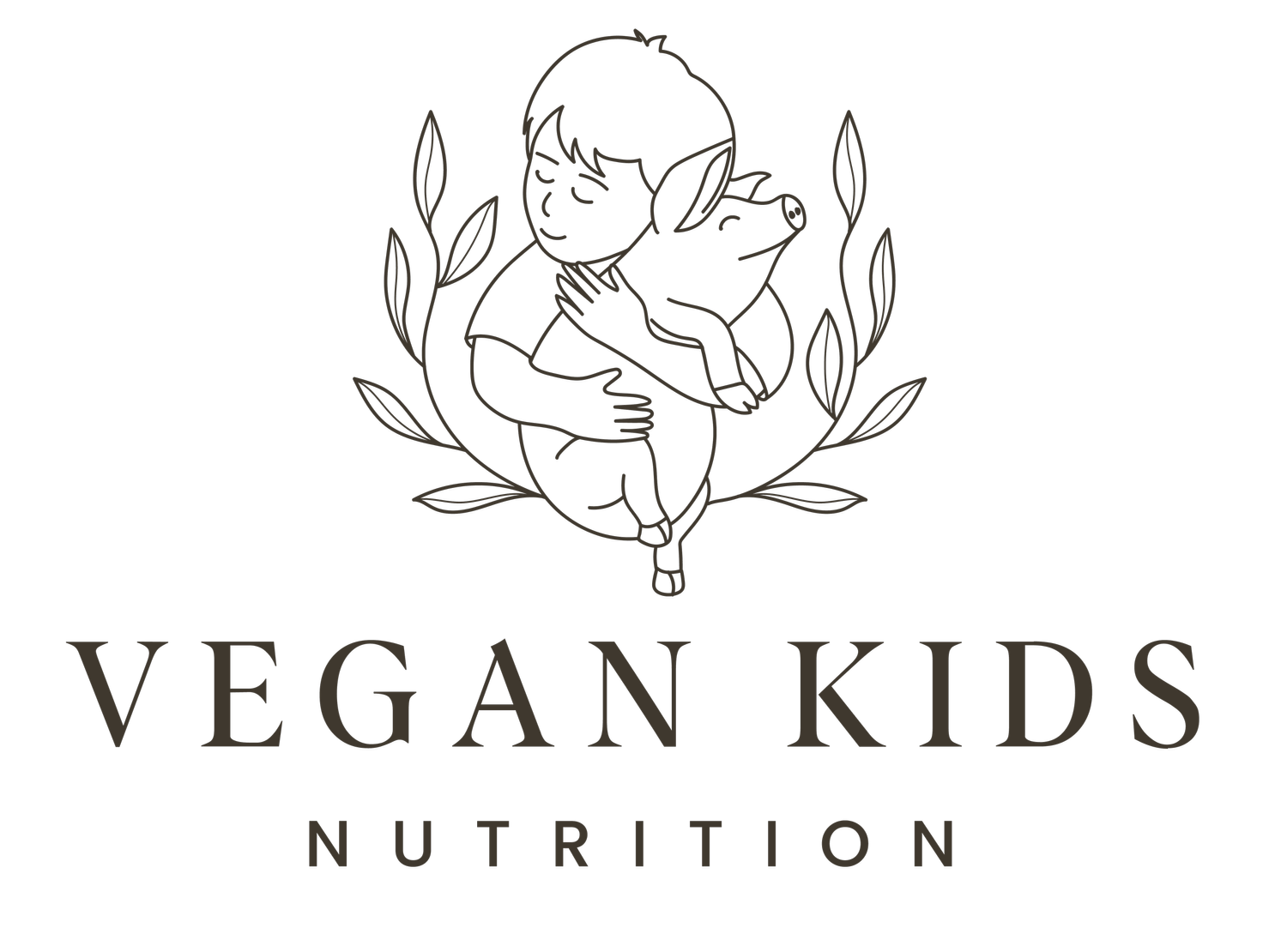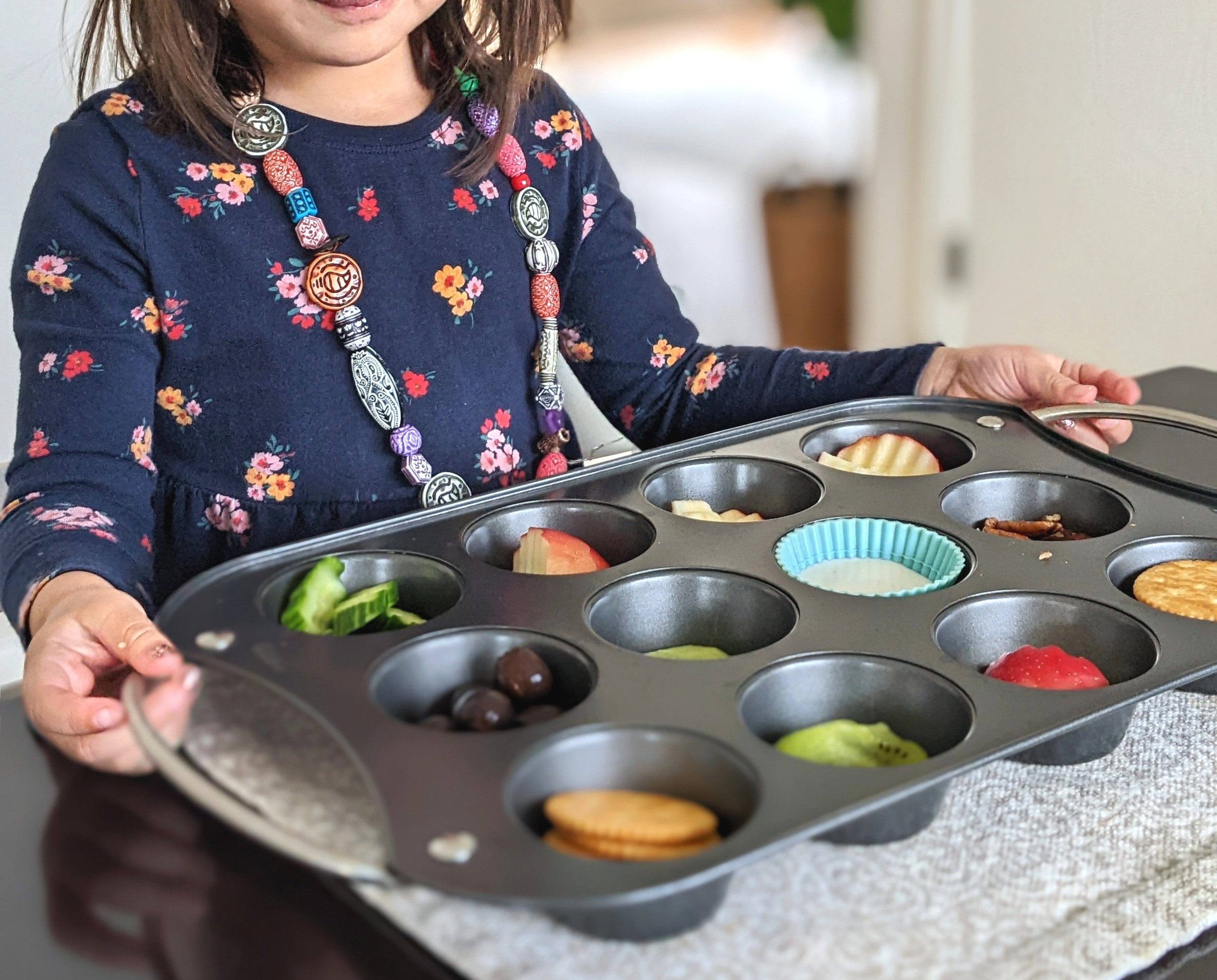“I want candy for snack”
That was the response from my four year old daughter when I told her it was time for her morning snack.
Typically, I give her two options to choose from but this time around, she didn’t even give me the chance to think about them! She quickly jumped to saying she wanted the red lollipop she had gotten recently after visiting our real estate agent for a holiday gathering.
Normally, I would've allowed it. I don't have a problem with her having candy for snack because it’s an approach I’ve implemented in my feeding as a way to not compete with a meal.
However, I wasn’t fond of the idea of her having candy today. I didn't feel like it would be the most appropriate option for her given her intake over the past few days. And not to mention, she was still recovering from a small cold so an extra boost in nutrition would help.
So, rather than giving in to her choice of candy, I suggested we should have a snack platter. It's a name I made up in the moment but the concept is not original. I’ve seen this approach being used by other pediatric dietitians—particularly for picky eaters—and just never had the need to give it a try…until now.
What is a snack platter
A snack platter is used as an approach to feeding your child by offering several options in one plate or container. The idea behind this is to give your child more autonomy with their food but also make it fun. It creates a different eating experience for your child, which makes them more likely to want to try a particular plant food.
I got out a muffin tin pan for my daughter, the same one I always use when I make muffins and told her we can put different options in each cup. You can use whatever you have available at home—whether a large plate, a divided container, or a muffin tin pan like what I used. You don’t necessarily have to go out and buy a new product.
My daughter seemed thrilled when I suggested we should make a snack platter. Possibly because it was new and it sounded exciting to pick different snack options.
I started taking out several options from both the pantry and the fridge, ones that she really loves and also ones that she's still learning to like. She brought her step stool over to the counter and began helping me in putting one item in each muffin cup. I didn't tell her where or how much, I allowed her to decide that for herself as a way to give her autonomy.
How can a snack platter help picky eaters
There are various benefits for a picky eater—or any child for that matter—when using the snack platter strategy.
1. Familiarity
Having opportunities to see a plant food gives your vegan child more exposure to that particular food. The more visual experiences your vegan child has, especially to foods they are still learning to like, the more they become familiar with that food. And the more familiarity they have with that food, the more likely they are to want to try it.
This is one reason why relying on smoothies for your vegan child isn't the most appropriate approach to meeting their nutritional needs. They don't get to see and learn about that food.
Engaging in visual experiences, such as helping out with a snack platter, helps your vegan child become more familiar with plant-based foods they reject. This helps your vegan picky eater move closer to wanting to try that ingredient and eventually wanting to eat it.
On my daughter's snack platter, I included pecans—a food she's still learning to like. I chose to include it so that she can become familiar with it simply through sight. Before my daughter is ready to try pecans on her own, she needs to see it several times.
2. Sensory
In allowing my daughter to help me place certain items on the muffin tin pan, this served as a sensory activity. Meaning by picking, touching, and feeling the different ingredients, she was able to explore different textures.
When a child is sensitive to certain sensory stimuli, eating becomes a challenge for them. In being involved with putting a snack platter together, your vegan child is exploring different sensory stimuli. And this type of exposure has shown to influence food acceptance for kids and more willingness to try a plant food.
So, if you can, allow your child to be part of the prep so they can participate in sensory experiences.
3. Positive feeding environment
Feeding your vegan child should come with no expectations for eating a certain plant food or a certain amount of food.
There should be no pressure to try or even a comment on what or how much to eat. Rather, there should just be a pleasant feeding experience—with you involved whenever possible. If you can sit with them and snack from the same snack platter together, that would be even better.
More often than not, I sit with my daughter when she has a snack. I've always done that for some reason since she was a young toddler and perhaps it was because her snack time aligned with mine. So, we just ate together. And throughout the years, I've seen a huge benefit to it.
In eating with my daughter, I’m modeling how to eat but I’m also showing her that the food she’s still becoming familiar with (i.e. pecans) are safe for her to eat. To her, the food she is still unsure about becomes a little bit more comfortable simply because she saw me eat it.
What you can do at home
The next time you’d like your vegan child—whether they are showing food selectivity or not—create a snack platter, preferably with them. This will allow them to become familiar with plant-based foods and experience different textures so that they feel comfortable to try these foods when they are ready.
You don’t need to encourage them to try it. You don’t need to tell them “Take a bite of the cucumber”. You just need to be present with them and create a fun and enjoyable experience with them. Remind yourself that there is no expectation for your vegan child to eat any of these foods. The goal is really to help them be more comfortable being around the foods they are still learning to like so they can move closer to wanting to try it—and eventually to meet their nutritional needs.
Remember the pecans in the snack platter? I included the pecans for familiarity without any expectations for my daughter to eat or try them. The simple act of engaging with that plant food—through sight, touching, and being in a positive feeding environment—she felt ready to want to try. On her own. And she did! It was only one piece and the rest she said “Here, you eat these mama” but she tried it and that counts toward helping her learn to eat pecans. That’s progress and that’s all that matters.
If you’d like to learn how to provide snacks that meet your vegan child’s nutritional needs, download my FREE Snack Guide that walks you through tips and ideas so you can feel reassured you’re doing things right.
Snack Confidently
Planning snacks for your vegan toddler or older child can be a simple process when you think of the number 2. In this FREE Snack Guide, you’ll learn how to offer snacks so your child meets their nutritional needs + vegan examples.





